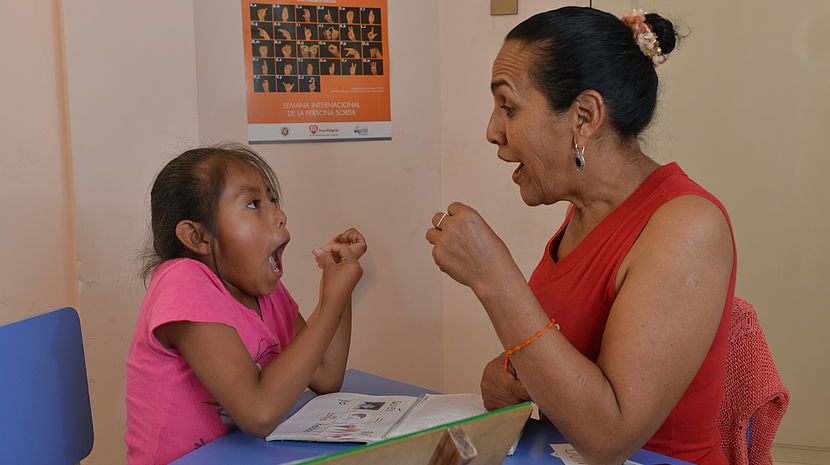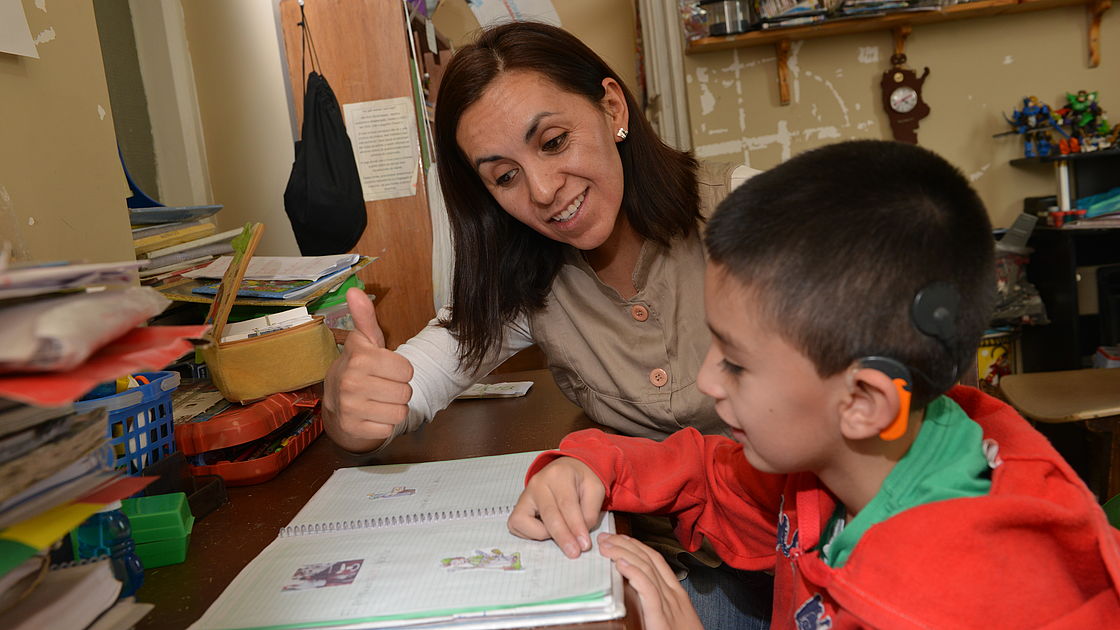International Week of the Deaf 2018

CBM
The International Week of the Deaf (IWDeaf) this year will be celebrated from 24-30th September 2018. This week long celebration aims to draw the attention of governments, authorities and the general public to the accomplishments of deaf people and the concerns of the deaf community. The theme this year is With Sign Language, Everyone is Included.
What is International Week of the Deaf (IWDeaf)?
International Week of the Deaf (IWDeaf) is an initiative of the World Federation of the Deaf (WFD). It was first launched in 1958 in Rome, Italy at the first WFD World Congress. Since then, it is celebrated annually by the global deaf community.
IWDeaf is celebrated in different countries throughout the world. Various activities are held such as marches, debates, campaigns, exhibitions and meetings. Participation and involvement are invited from all stakeholders including families, peers, governmental bodies, professional sign language interpreters, Disabled People’s Organisations and Civil Society organisations like CBM. It is about uniting as a global community to promote the rights of deaf people and highlight specific human rights topics that merit attention. Each year sees a new theme. This year follows on from last year’s theme of promoting full inclusion for everyone with sign language.
This year the inaugural celebrations of the International Day of Sign Languages (IDSL) will also be recognised during this IWDeaf week. IDSL has been adopted by the United Nations General Assembly and will be commemorated annually on 23rd September beginning in 2018. The objective of IDSL is to raise awareness and strengthen the status of sign languages.
Read a blog entry about IDSL here.
For a toolkit and campaign materials to help you promote IWDeaf and IDSL please visit the WFD website.
How CBM supports Sign Language in its work
Apart from employing workers who are deaf or hard of hearing, CBM supports a number of initiatives which lead to promoting the rights of deaf people, sign language and access to education within the range of its key areas of work including among others - education, mental health, ear and hearing care, community-based inclusive development. CBM adopts a rights-based disability-inclusive development approach ensuring disability representation, gender equality and safeguarding in all its work.
For deaf employees CBM provides sign language interpreters and / or close captioning as required for visits or meetings (internal and external) according to their individual needs. In addition, hearing colleagues are provided with opportunities to learn sign language and Deaf culture sessions. These can be in-house courses, learning from deaf colleagues or attending sign language classes externally.
CBM supports partners to ensure that people who are deaf or hard of hearing:
- can participate in relevant aspects of programme planning, delivery, monitoring and evaluation as part of a disability inclusive development approach
- have access to relevant training opportunities
- are involved in national sign language research and development
- have access to educational opportunities from an early age
- have access to communication support according to their needs
- are role models or educators of deaf or hearing learners.
Read this compelling story about three deaf women in Vanuatu who are determined to be financially independent.
Read this blog entry about the first International Day of Sign Languages, celebrated on 23 Sept, 2018.
Education programmes

8 year old Leandro wears a cochlear implant to hear better. He is deaf from birth. CBM partner Altiora in Cochabamba, Bolivia is teaching him sign language and providing speech therapy as well. Leandro visits a regular school that provides inclusive education.
CBM/Foto Backofen MhmCBM has many examples of education programmes where deaf and hearing children attend the same school but where the communication support according to individual need is provided. Acquiring sign language from an early age in addition to spoken or written language has significant benefits for deaf children.
Some of these schools have preparatory communication classes for learners who are deaf or hard of hearing, where they are taught is a specialist class for one or two years by sign language fluent educators before they attend mainstream class where in-class communication support is provided Other schools have resource classes where learners who are deaf or hard of hearing attend mainstream classes as well as specialist in one-to-one or small group sessions. In these schools, hearing learners and educators are provided with opportunities to learn signed communication so that all children can learn together. Some special schools are transforming to becoming resource centres so that specialist teachers from the special school can support mainstream teachers to have children who are deaf or hard of hearing in their class with specialist support and further training provided at the resource centre.
There are many options being used in different countries. Access to sign language is a deaf child’s right. It is known to be the best chance that deaf children have of developing language acquisition and communication, along with access to quality amplification aids where available and appropriate. Deaf adults and sign language interpreters can support inclusion by teaching of sign language and raising awareness about Deaf culture.
What is important to remember is that having access to a bilingual approach with early sign language communication provides the ground for developing language and communication skills required to support inclusion in school. Early intervention programmes designed to support this approach are an essential first step to enabling deaf babies and toddlers be able to attend inclusive education. These are important community based programmes. It’s also vital that their family members and communities learn to sign. Deaf adults and specialist teachers can play an important role in supporting this approach in the community and in schools. Where deaf girls and boys are included, it is very important that their hearing peers, educators and school staff learn to communicate in sign language. Children who learn to sign together from an early age will have no barriers to communicating with each other as they grow into adults. Access to sign language is a deaf child’s right. It is known to be the best chance that deaf children have of developing language acquisition and communication, along with access to quality amplification aids where available and appropriate. Deaf adults and sign language interpreters can support inclusion by teaching of sign language and raising awareness about Deaf culture.
Programme in Haiti
This year CBM would like to highlight one key programme from Haiti where a programme partner is supported to promote Haitian Sign Language. Under the leadership of “Pour Enfants Sourds”, a local organisation passionate about improving the lives of people who are deaf in Haiti. CBM is supporting a project titled “Standardisation of Haitian Sign Language”. This 4-year initiative aims at unifying Haitian Sign Language, but goes also far beyond that. It also promotes learning and teaching of a unified Haitian Sign Language amongst the Deaf Community and the hearing population. In particular, the project addresses the fundamental matter of Sign Language interpreters and their training. This is to acknowledge that even with a fully codified and recognised Sign Language in place, the lack of interpreters often hinders full and equal participation of people who are deaf. And this is not only true in Haiti.
In order to achieve inclusion and equal participation in society sign languages need to be accessible to all; they need to be respected and supported, all of which are subsequently required to achieve any of the sustainable development goals established by the United Nations to ensure that ‘no one is left behind’. This statement equally applies to inclusive education.
Recognising the International Day of Signed Languages is a major step forward in recognising the importance of sign language to deaf communities around the world. As more deaf people have access to their national Sign Language they will be able to express themselves better, share their views and access information as is their right to do so. As a deaf person myself, I think this week long focus once a year is important to commemorate. It ensures that the public at large are made more aware of deaf people who are so often invisible to them. We need to find a way to make it more visible and to encourage communication between deaf and hearing people. More visibility and better communication will lead to more inclusion and accessibility to achieve equality for all.Murielle Bertrand, Finance & Human Resources Officer at CBM International.